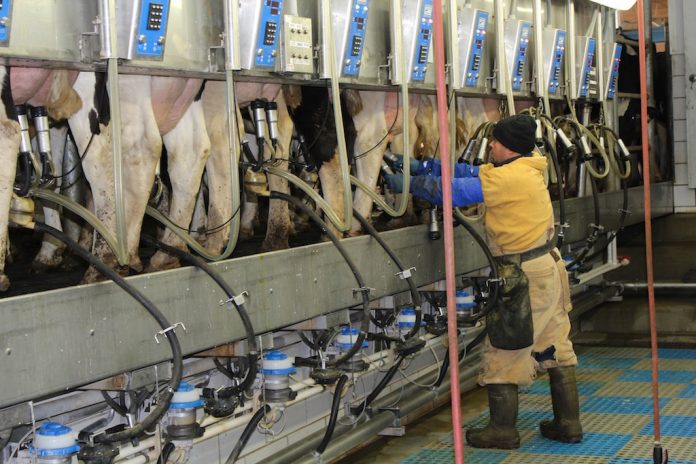The five traditional senses of taste, smell, hearing, sight, and touch are vital for our survival and normal function in life. In addition, they are critical in our working with dairy cattle.
You might at first ask ‘what does taste have to do with working with dairy cattle’? If you taste manure, then you either need to close your mouth when working in close proximity of the cows or need to avoid compromising situations that you have just found yourself experiencing.
Also, if you taste dirt, again, you need to close your mouth in the dusty situation, or possibly walk further back from cows on a dusty path. Or you may be looking at heifer that you are trying to break to lead from a lateral position and the dirt in your mouth may be the least of your problem.
Smells
You get used to the normal aromas on the farm and neighbors have to remind you that cows even smell, but there are abnormal smells that should alert you to issues that need attention.
What’s that?
Hearing is used all around the farm in communication with employees, staying out of the way of equipment, listening for unusual sounds of animals, even late at night outside your bedroom window when the barn is 100 feet away, etc.
Sight
And keep your eyes open at all times around cattle for your and their safety and for determining their health and behavior.
Touch
The sense of touch, of course, is important for many aspects in working with dairy cows, but I want to focus on touch relative to its importance for positive human-animal interaction.
We have known for many years, even documented with research on dairy cows, that negative human-animal interactions can have adverse effects on animal behavior and performance.
The most common activity involving human-animal interaction is the milking routine. Using 30 dairy herds in Germany and Denmark, and published in 2018 in the Journal of Dairy Science, researchers studied the impact of human-animal interactions, herd stress level, and stockpersons’ attitudes on udder health and animal behavior.
The stockpersons’ higher agreement on patience being important when moving the cows, their view that necessary contact with cows be pleasant, and their greater amount of positive interactions with cows during milking were associated with better udder health.
Indicators of lower stress were associated with higher self-cure rates of mastitis.
In another study conducted in Chile, published in 2018 in Applied Animal Behavior Science, 38 Holstein cows were categorized as low (15 or more seconds) or high responders (less than 15 seconds), based on their exit time from a weigh scale and this was used as a measure of cow personality.
The human-animal relationship was assessed using the avoidance distance test, which consisted of the cow’s reaction to a moving human at the feed bunk. Cows within each group received tactile stimulation by stroking the underside of their neck at the milking parlor, 5 min/day for 15 days (75 minutes of tactile stimulation per cow).
The avoidance distances of the cows were measured before and after the tactile stimulation period.
Avoidance distances decreased after the tactile stimulation period for both the low and high responder groups, but it did not differ by group.
Stroking the underside of the neck improved the human-animal relationship, probably due to cows’ fearing humans less, regardless of individual cow’s personality.
These studies emphasize that positive interaction with the animals is very important in promoting positive human-animal interactions and not just the avoidance of negative behaviors.
The milking process on conventional dairy farms is the regularly performed activity where there is close proximity of people to animals; therefore, it offers the opportunity to have positive contact with the animals.
Even though the additional time will not be practical for purposely touching cows as in the above study, multiple opportunities exist in the movement of cows to and from the parlor and while in the parlor to provide positive “touch” interactions with the animals.
Give your cows a positive touch today and tomorrow and the next day.













